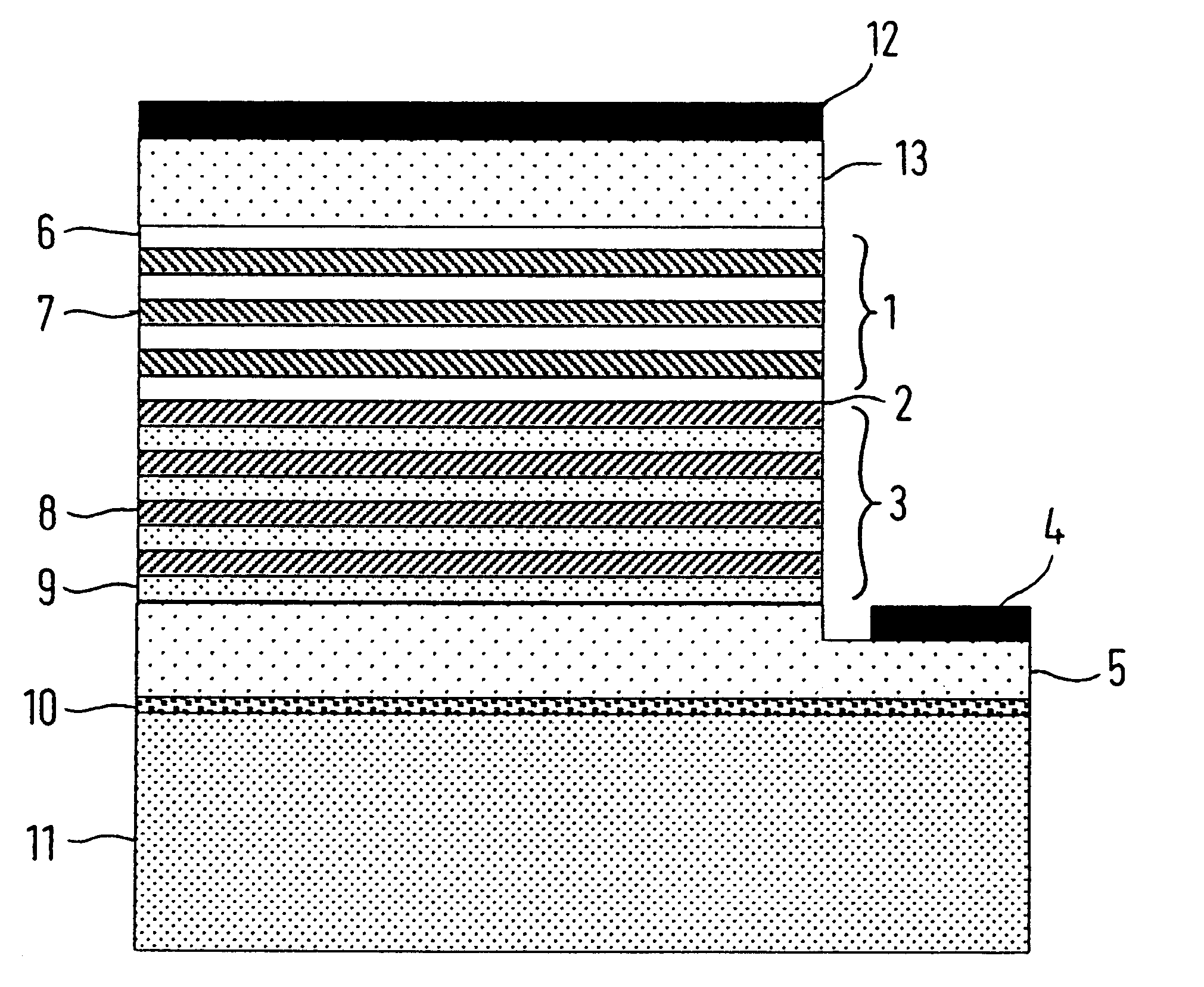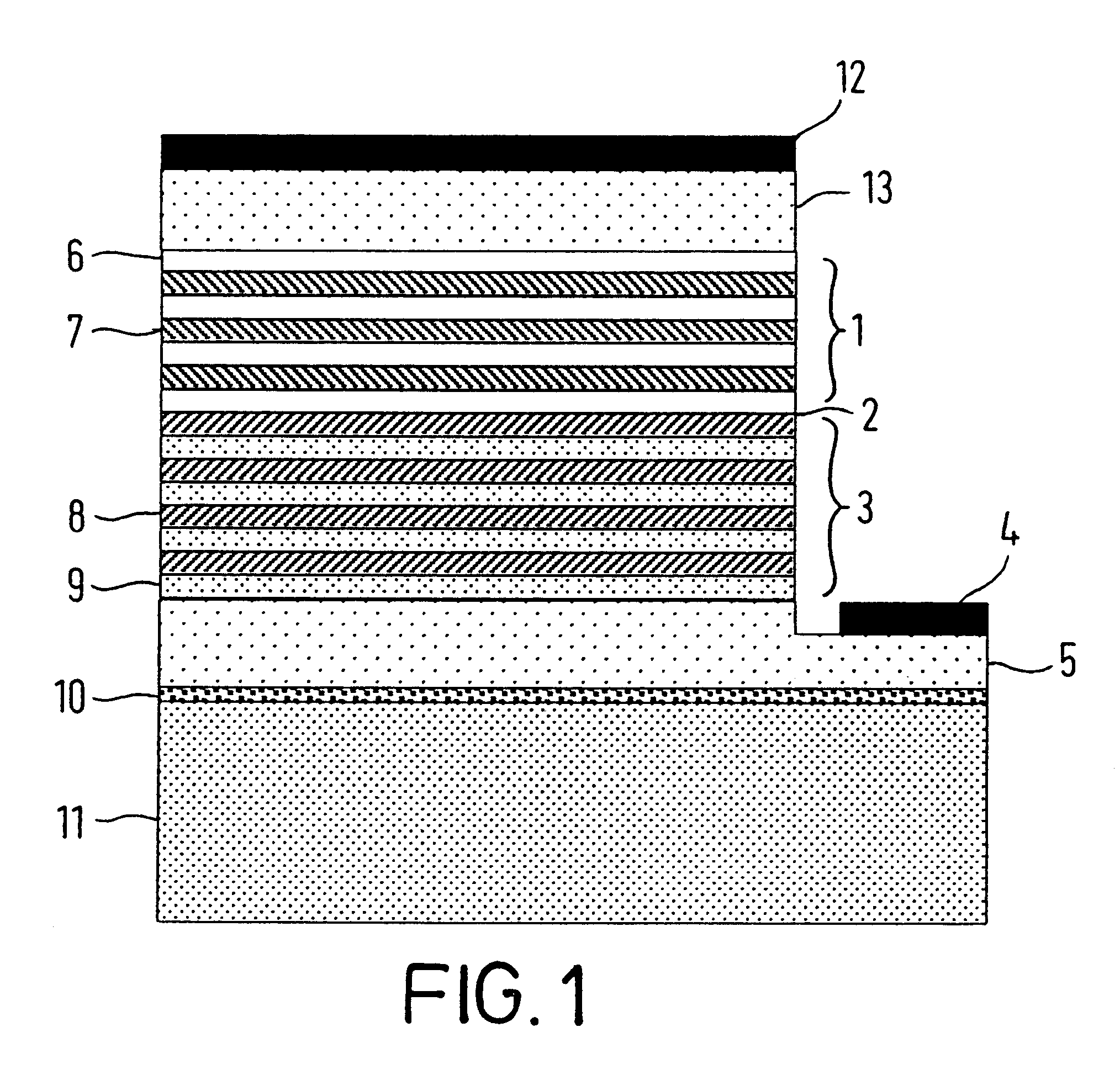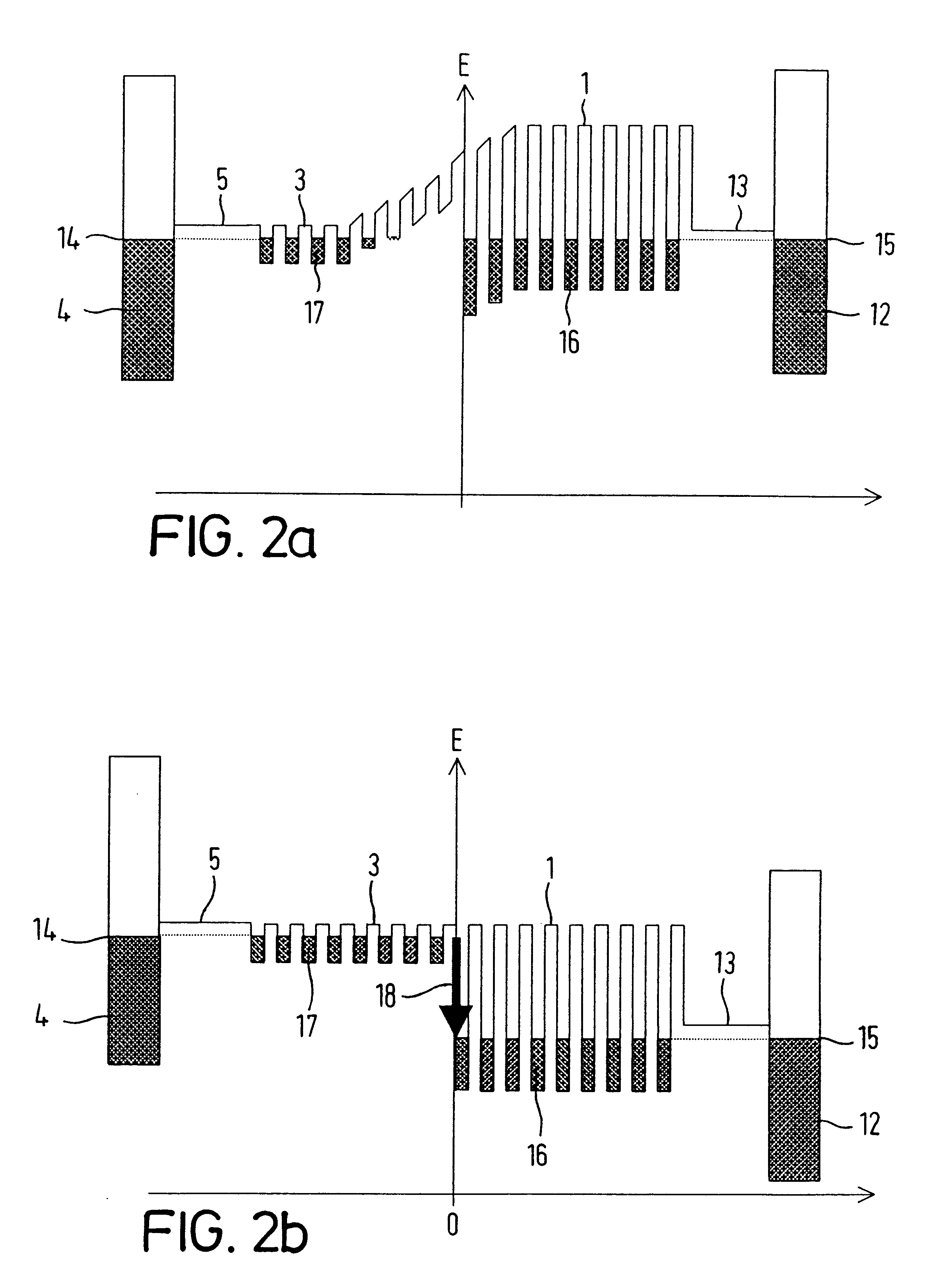Unipolar light emitting devices based on III-nitride semiconductor superlattices
a technology of iiinitride and semiconductor, applied in semiconductor devices, semiconductor lasers, semiconductor lasers, etc., can solve the problems of blocking the further development of high-power lasers and light-emitting diodes in the visible spectral rang
- Summary
- Abstract
- Description
- Claims
- Application Information
AI Technical Summary
Problems solved by technology
Method used
Image
Examples
example 2
FIG. 3. shows a ULED structure according to Example 2. It has the same structure as Example 1, shown in FIG. 1, except there is an active layer 19 containing optically active impurities or Ga.sub.x Al.sub.1-x N quantum dots at the interface between the superlattices 1 and 3. The active layer allows the use of lateral quantization (LQ) related to quantum dots or impurities to suppress phonon energy relaxation channel for electrons. The use of LQ means the absence of free motion along the quantum well plane. This makes the electron energy spectrum discrete and in the case when all gaps between the levels are higher than optical phonon energy, then one-phonon transitions become forbidden by the energy conservation law.
A second advantage of the active layer is the possibility to tune resonantly the sub-band energy positions in superlattices to optically active transitions of impurities or quantum dots in the active layer. This will allow the excitation of the optical transitions in the ...
example 3
FIG. 4. shows a ULED structure for white light generation according to Example 3. It has a sapphire (Al.sub.2 O.sub.3) substrate 11 upon which an aluminium nitride (AlN) buffer layer 10 of 200 .ANG. thickness is formed. Then an n-cladding and contact layer 5 was deposited which is made of 3 .mu.m thick n-AlN doped by silicon (Si) with a doping level of 10.sup.18 -10.sup.20 cm.sup.-3. On this layer, a Gn.sub.x In.sub.y Al.sub.1-x-y N / AlN graded superlattice 20 was epitaxially grown which is formed of three undoped 5-20 .ANG. thick Ga.sub.x In.sub.y Al.sub.1-x-y N / AlN quantum wells 21 and four 10 .ANG. thick AlN barriers 22. The variations of x and y are in the range of 0.05-1.0.
Then an active layer 23 containing optically active impurities or Ga.sub.x In.sub.y Al.sub.1-x-y N quantum dots was deposited.
On the active layer 23 a Ga.sub.x In.sub.y Al.sub.1-x-y N / AlN graded superlattice 24 was epitaxially gown which is formed of three undoped 5-20 .ANG. thick Ga.sub.x In.sub.y Al.sub.1-x-...
PUM
 Login to View More
Login to View More Abstract
Description
Claims
Application Information
 Login to View More
Login to View More - R&D
- Intellectual Property
- Life Sciences
- Materials
- Tech Scout
- Unparalleled Data Quality
- Higher Quality Content
- 60% Fewer Hallucinations
Browse by: Latest US Patents, China's latest patents, Technical Efficacy Thesaurus, Application Domain, Technology Topic, Popular Technical Reports.
© 2025 PatSnap. All rights reserved.Legal|Privacy policy|Modern Slavery Act Transparency Statement|Sitemap|About US| Contact US: help@patsnap.com



